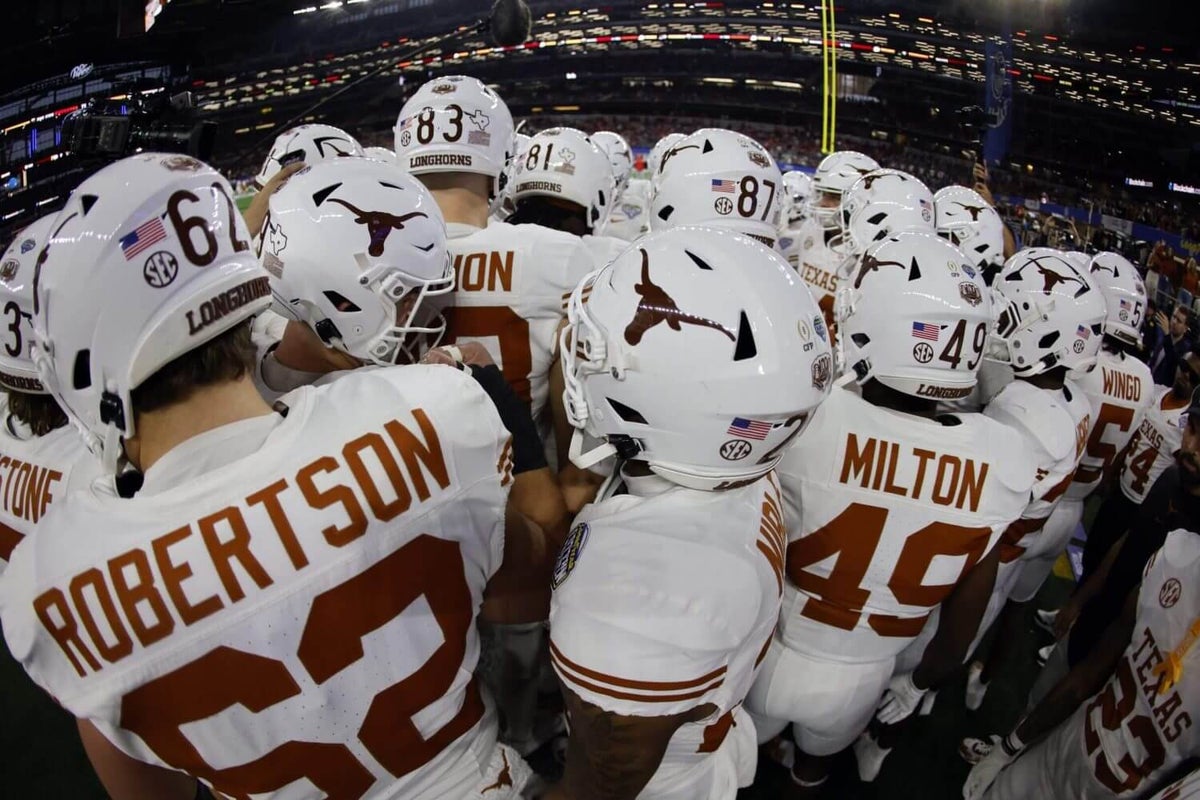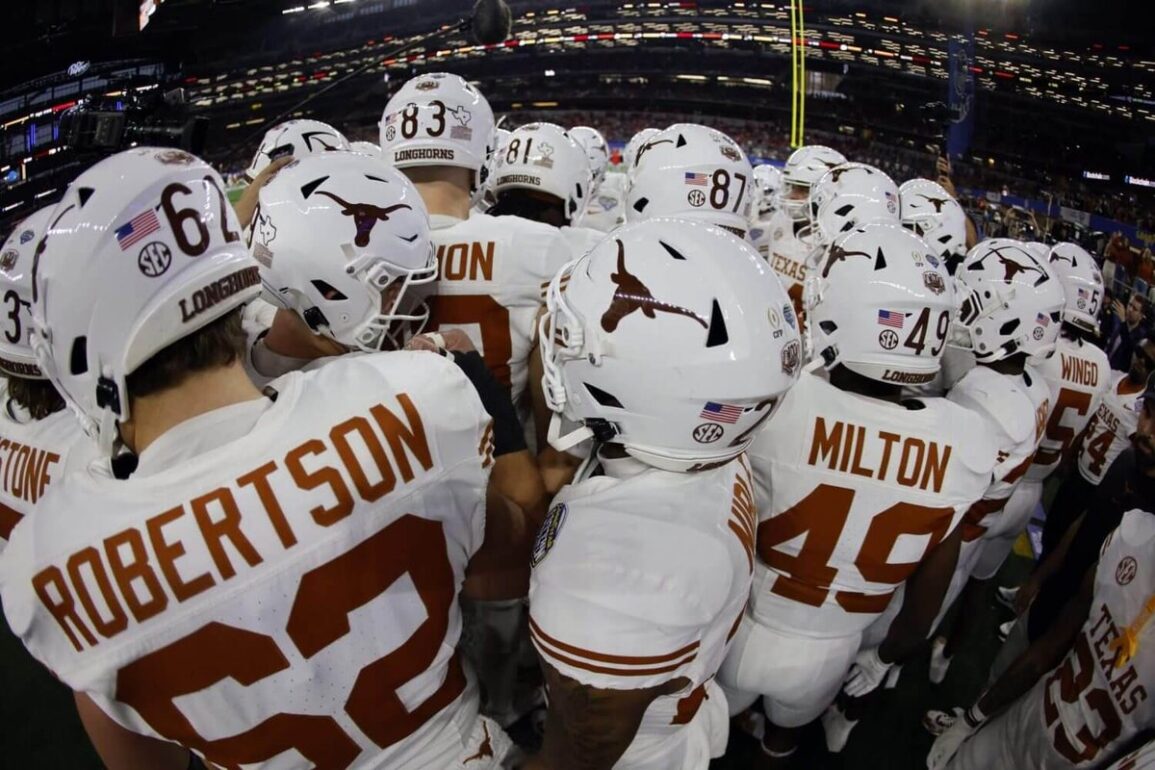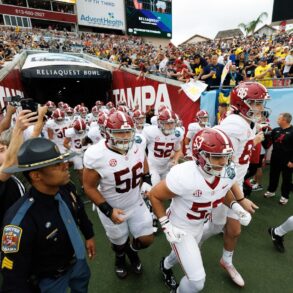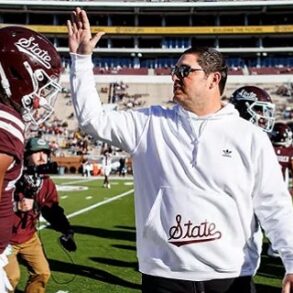
College football roster budgets have ballooned this offseason as teams prepare for a new era in which schools can compensate athletes directly. But could a championship team cost as much as $40 million?
That’s one high-end estimate of what Texas could be spending on its 2025 roster, according to a Houston Chronicle report from columnist Kirk Bohls. Bohls, who has covered the Longhorns for more than 50 years, reported Wednesday that the team’s roster budget currently sits somewhere “between $35 million and $40 million,” including the revenue the school will be able to share as a result of the House v. NCAA settlement.
Advertisement
If that budget range is accurate, it represents a significant leap from the previous highest known roster budget in the sport: Ohio State’s 2024 roster, which went on to win the national championship, cost around $20 million, athletic director Ross Bjork told the Columbus Dispatch and Yahoo! Sports last summer.
Is an estimate of as much as twice the Buckeyes’ figure realistic or far-fetched? The Athletic reached out to multiple Texas officials to confirm the veracity of the Chronicle’s report, but all declined comment. But after conversations with a dozen people elsewhere in college football with knowledge of roster budgets, including general managers, personnel directors and name, image and likeness collective heads, here’s what we know — and don’t — about Texas’ spending power and the state of roster budgets headed into the 2025 season. Each person was granted anonymity because they were not authorized to speak publicly about team finances.
What we know
Team roster budgets are rarely officially confirmed.
Because schools won’t directly share revenue with players until the settlement is approved, compensation still runs through NIL collectives, which help shield contracts and records from scrutiny. But Texas Tech basketball star JT Toppin and quarterback Carson Beck, who transferred from Georgia to Miami, are just two examples from this year of player pay levels becoming public knowledge.
Some schools or collectives are more forthcoming than others. Walker Jones, executive director of The Grove Collective, which works with Ole Miss athletes, said last fall that the collective spent more than $10 million on NIL deals for the football roster. Texas Tech spent more than $10 million on just its transfer portal class this offseason, and Bjork opened eyes when he revealed Ohio State’s budget last year.
Advertisement
Most programs, however, prefer to keep those numbers close to the vest. An athletic director at a Power 4 program, when asked this week by The Athletic how much his school expected to allocate to the football program in revenue sharing, declined to specify, citing a “competitive advantage” of keeping it quiet.
Texas athletics has plenty of money.
The Longhorns consistently rank near the top of college athletics in annual revenue. In 2024, Texas pulled in $331.9 million in athletics revenue, No. 1 in the country according to the Knight-Newhouse College Athletics Database. In 2023, Texas was second in athletics revenue ($239.2 million) to only Ohio State ($251.6 million).
In addition, the Longhorns have operated at the forefront of the market since the NCAA started allowing athletes to be compensated for use of their NIL rights in 2021. In December of that year, the football program made waves with the “Pancake Factory,” an initiative that promised $50,000 annually to Texas offensive linemen in exchange for promoting Austin charities. That price seems quaint now; Power 4 teams may need 10 times that much to obtain a starting offensive lineman for a season.
Eventually, the five collectives that had sprung up to compensate Texas athletes across various sports merged into the Texas One Fund, which is now the school’s exclusive collective. The Texas One Fund spent more than $11 million compensating Longhorn athletes in 2023, according to a tax return obtained by Sportico.
At an alumni speaking engagement in 2022, Texas athletic director Chris Del Conte lauded the power of leveraging some of the school’s 500,000-plus living alumni, telling the crowd, “NIL is our game. When that basket passes around, I don’t need stuff that jingles, I need stuff that folds.”
Blake Lawrence, the CEO of Opendorse, a company that facilitates and manages NIL deals, told The Athletic in January that “Texas was one of the first to start to really lean into bringing consistent NIL opportunities to athletes across all sports.” He said of the roughly 50 collectives that Opendorse works with nationwide, Texas One Fund is near the top in just about every category.
Advertisement
“Texas is in the top three (nationally) of every measurable unit in NIL data: total NIL compensation, total NIL deals, total NIL deals to women, total commercial deals,” Lawrence said. “No matter what metric you pick … Texas is in the top three, if not No. 1 across the board.”
Texas football has excelled in retaining key players and acquiring new ones in the transfer portal, which are the two types of transactions that command the most dollars. When the Longhorns are in the mix for a player in the portal, their chances are usually strong because of their spending power.
Industry insiders don’t think a $35-40 million roster budget is out of the question for top programs.
A February survey of 13 coaches and personnel staffers on the transfer portal and player compensation contained a variety of answers on what it would take to build a championship roster in their conferences. But one Power 4 general manager offered this: “$40-50 million. That’s where I think it’s going to go.”
Asked about the Texas estimate today, several GMs, personnel directors and people in the NIL world believed the number.
“It doesn’t surprise me,” said the founder of a Power 4 collective. “Texas is a massive program and is obviously looking to win titles. (Athletic directors) and universities who don’t believe teams will go way above the (revenue sharing) cap, especially ones that want to compete for titles, are lying to themselves and their fan bases.”
Nearly everyone surveyed on Wednesday found a $35 million to $40 million roster to be realistic for Texas, with several suggesting only a small handful of schools can spend in that ballpark. A second Power 4 GM described Texas as paying some of its backup players like starters.
Pending revenue sharing is boosting everyone’s spending power.
Considering Texas spent eight figures to compensate athletes through its collective in 2023, it’s reasonable to assume that number went up in 2024, as team budgets at top programs increased. Add in at least $20 million to the athletics compensation pool via direct payments coming in the wake of the House settlement — the majority of which is ticketed for football at most P4 schools — and getting above $30 million isn’t unreasonable for a program like Ohio State or Texas.
Advertisement
In the February survey, starter-caliber players at multiple positions were said to have a market in the mid- to high six figures. Power 4 starting quarterbacks typically cost a minimum of $1 million. Defensive linemen, edge rushers, tight ends and receivers can all clear above $500,000, and some hovered close to $1 million in the winter portal window.
In this spring’s transfer portal window, the Longhorns landed a starting receiver (Stanford’s Emmett Mosley V) and a starting tight end (Cal’s Jack Endries) and two starting defensive linemen (Syracuse’s Maraad Watson and Maryland’s Lavon Johnson) from Power 4 schools. In the winter portal window, they landed three more defensive linemen.
“They got five defensive tackles in the portal,” a third Power 4 GM said. “That’s at least $500,000 per player for an average one. For an elite defensive tackle in the portal, it’s $700,000 to $800,000.”
But the bulk of the money, the third GM said, likely went toward roster retention. Texas is bringing back starters or elite talents at multiple positions, including edge rusher (Colin Simmons and Trey Moore), linebacker (Anthony Hill Jr.), safety (Michael Taaffe), receiver (DeAndre Moore and Ryan Wingo), running back (Quintrevion Wisner) and offensive line (DJ Campbell). That’s not to mention whatever quarterback Arch Manning is making, though the Chronicle reported that Manning doesn’t take money from the school and that he and his family “acquired all his deals on their own ‘with no help from the school.’”
“The market doubled this year because you have the rev share and the (collective) money,” the third Power 4 GM said. “You have people calling players on your roster saying, ‘We’ll give you this or that.’ They take it to Texas and say, ‘This is what I need for you to keep me.’
“Texas donors, boosters are not losing guys over money, so whatever it takes, make sure we keep ’em so we can keep this rolling. They’ve been to the final four two years in a row, so they’re not going to bow out over some dollars. … I bet they have at least 12 guys making right at a million dollars.”
What we don’t know
The exact math to get to a $35-40 million budget estimate.
Does that jaw-dropping number include just 2025 player salaries, or does it account for the total value of multi-year contracts? Most players sign one-year deals with collectives, but some — like former Tennessee quarterback Nico Iamaleava — sign multi-year deals. Does that number include only what will be paid directly by Texas and its collective, or does it include outside NIL deals that were secured elsewhere, like Manning’s?
Advertisement
“That number does seem really high,” a fourth Power 4 GM said. “But at the end of the day, if the money works through collectives and other third-party deals, it’s hard to really say the exact amount that could’ve been produced by those teams.”
Though some schools are mum on what they will allocate to various sports via revenue sharing, some have offered a road map. Georgia, one of Texas’ SEC counterparts, plans to allocate 75 percent of its cap to football, and athletic director Josh Brooks said in February he expected many SEC peers to split their cap similarly. If Texas followed a similar path, that could account for at least $15 million of the high-end budget estimate.
What the finalized revenue sharing caps will be.
The oft-cited $20.5 million revenue sharing “cap” coming for the 2025 season is simply an estimate. Multiple people briefed on their teams’ roster budgets emphasized that they don’t know the final number schools will be able to spend on their athletes, only that the House settlement calls for it to be set at 22 percent of the annual revenue for an average Power 4 team.
Revenue sharing, if the settlement is approved, is expected to begin July 1 and it’s possible that the final number is slightly higher than $20.5 million.
Whether Texas would be alone in pushing toward $40 million.
Multiple GMs believed that if Texas is spending at this reported level, the Longhorns aren’t the only one. Many blue bloods don’t seem to be blinking as college football’s roster investment battles enter new territory.
“I bet you there’s somebody out there that’s higher,” the third Power 4 GM said. “(Texas) is top five, for sure. But I bet it’s not the highest.”
(Photo: Ron Jenkins / Getty Images)
This post was originally published on this site be sure to check out more of their content.








